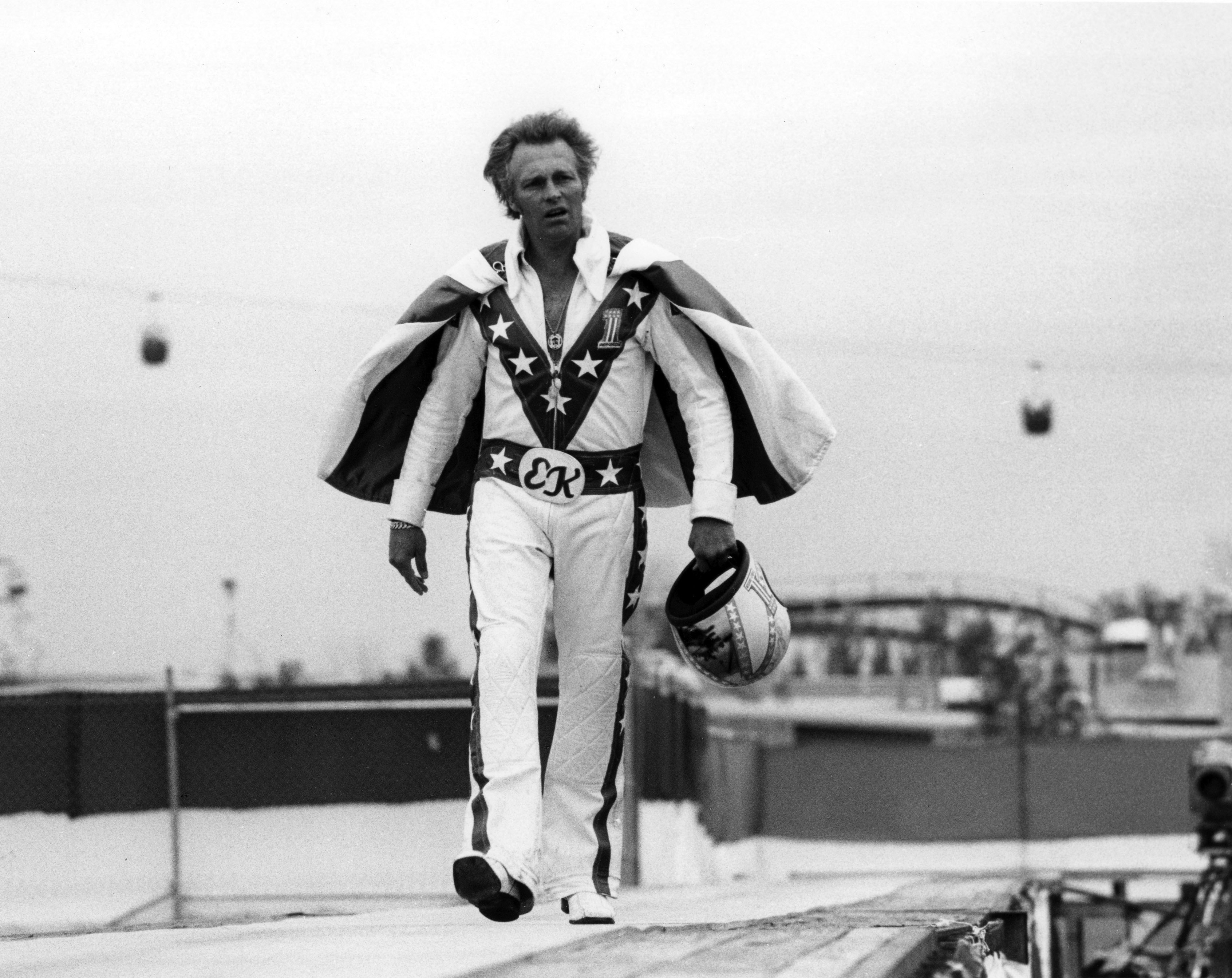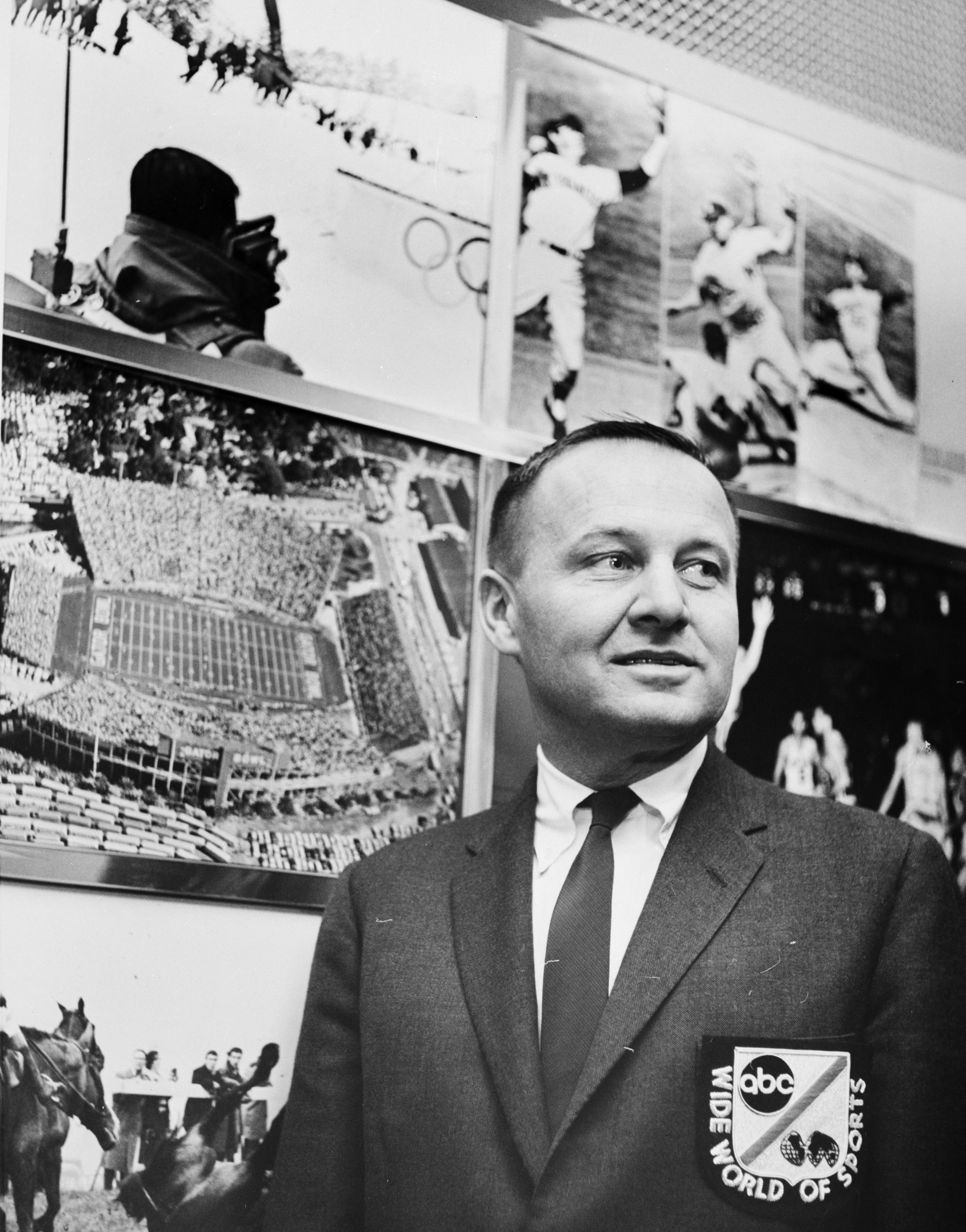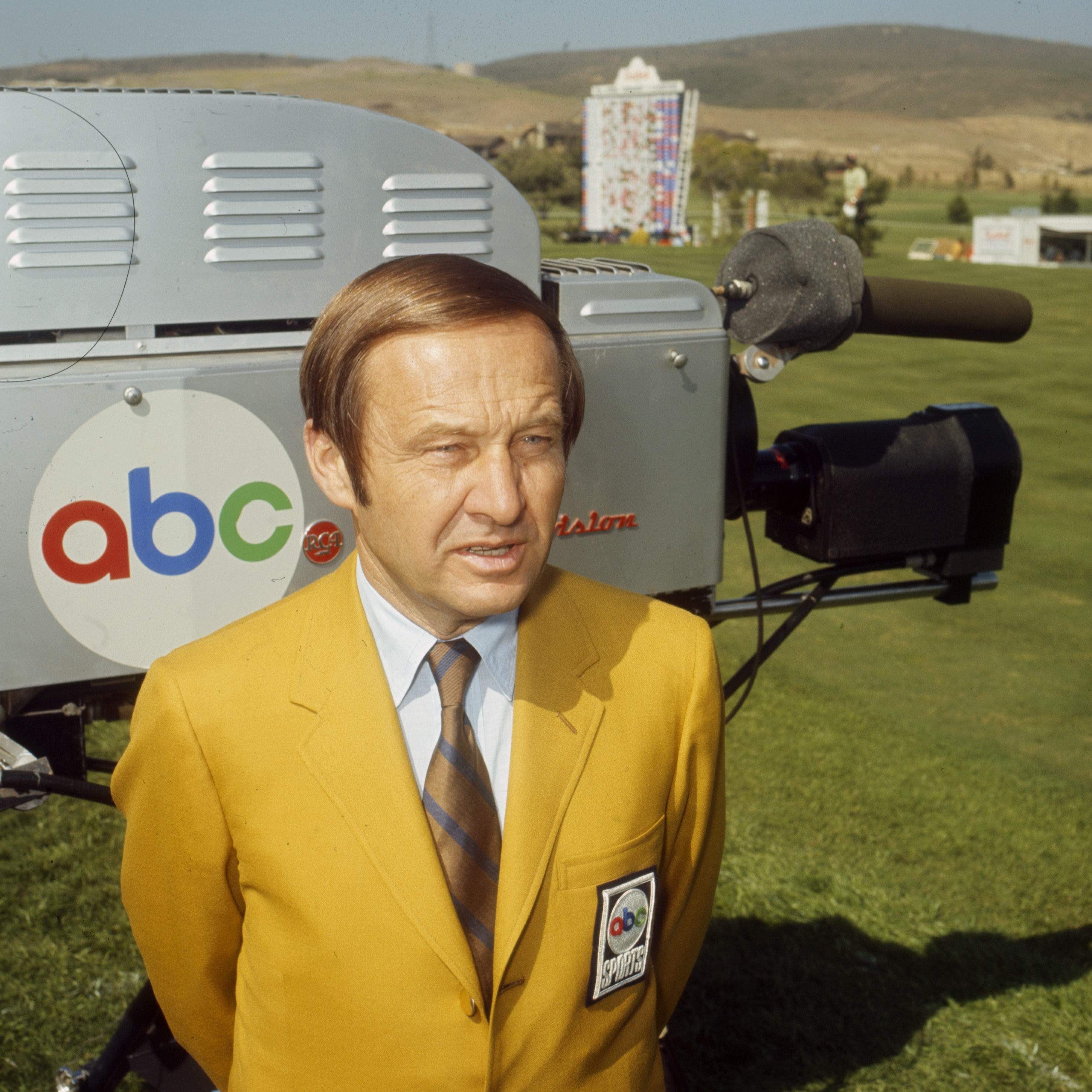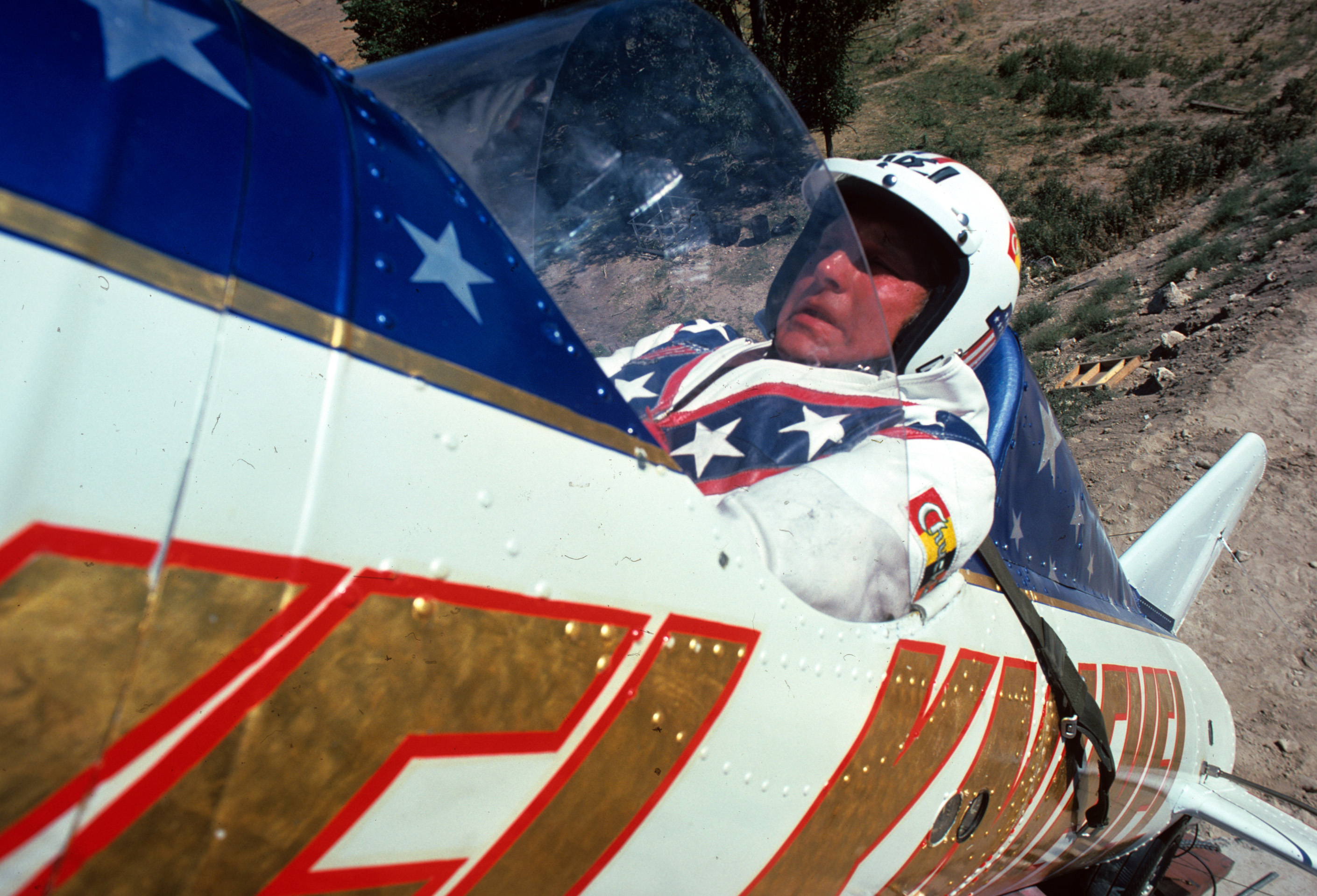ABC’s ‘Wide World of Sports’ debut 60 years ago. It would go on to change sports television as we know it
“Wide World” was initially given just a 20-episode order as a replacement series in the summer of 1961, designed to bridge the sports void on ABC’s schedule until the lucrative college football season came around again.
Arledge, whose unparalleled ambition and audacity would lead him to create “Monday Night Football” and ascend to president of ABC News, had grander aspirations for “Wide World” and didn’t allow that skepticism, even from his highest-profile friends, to cloud his vision.
“I remember once, during the process [of creating the show], writing ideas for it on a lined yellow pad, late one night in a motel room I was sharing with Curt Gowdy [on a college football road trip],” Arledge wrote in his memoir, which was published following his death in December 2002 at the age of 71.
“I told him about the show, how every week it would travel the world for sports rarely, if ever, seen on US television — some of them sports that Americans didn’t even know existed.”
Gowdy, a beloved Red Sox broadcaster and perhaps the best-known national play-by-play voice of his time, did not humor his friend.
“That’s the craziest idea I ever heard of,” Gowdy said. “It will never work.”

Off to a rocky start
Gowdy was almost correct. In his 1998 memoir, McKay recalled that early ratings were “miserable.” The show was nearly canceled that first summer. Mostly due to the lack of a better replacement option, it managed to get picked up for a full season in 1962.
That’s when Arledge’s audacity paid off. At the height of the Cold War, he secured the rights to broadcast a United States-Soviet Union track meet from Moscow. Two charismatic athletes — US sprinter Wilma Rudolph and Soviet high jumper Valery Brumel — captured the imaginations of American viewers.
That event was the springboard “Wide World of Sports” needed. The show was on its way to becoming an institution, reaching a heightened place in American popular culture that even Arledge could not have conjured on his yellow notepad.
The show ran from that April 1961 debut until its cancellation on Jan. 3, 1998, in a late-afternoon window every Saturday on ABC. McKay remained the primary host of the 90-minute program through 1987, with co-hosts including Robin Roberts and Frank Gifford joining him in later years.

Per Arledge’s accounting, “Wide World of Sports” traveled to 53 countries and 46 states, televising 4,967 events in more than 100 sports. The show won 36 Emmy awards.
It was the first to broadcast the Indianapolis and Daytona 500s, the British Open, the Tour de France, and the Little League World Series. The program gave greater exposure to gymnastics and figure skating, which would become Olympic cornerstones.
There was suspenseful kitsch (human crash-test dummy Evel Knievel jumping assorted objects on his motorcycle), family entertainment (the Harlem Globetrotters), and one particular relationship both poignant and comic (the years of verbal sparring and friendship forged between Muhammad Ali and Howard Cosell).

Many “Wide World of Sports” innovations — slow-motion replays, split screens, underwater cameras — are still used today. During a broadcast of a Bills-Chargers AFL exhibition game in 1961, Buffalo quarterback Jack Kemp wore a microphone, and a cameraman ran in and out of the huddle between plays.
But its specialty, and perhaps its greatest appeal, was giving serious time to quirky competitions all over the globe: cliff diving in Acapulco; wrist-wrestling in Petaluma, Calif.; sky flying in Falun, Sweden; demolition derbies in Islip, Long Island; roller skating in Madrid, ski racing in St. Moritz; and barrel jumping on ice in the Catskills.
Arledge found his subjects by scouring the New York Times archives, making note of every obscure sporting event that seemed interesting from a television perspective, and used that as “a road map of possibilities,” he wrote. “I’d select an event that intrigued me, immerse myself in its lore, and fly off to acquire the rights.”
Intro said it all
No matter how many events, characters, and locales — the show also doubled as a not-so-subtle travelogue — “World Wide of Sports” introduced, its opening credits remained more famous than any segment. If you’re of a certain age — one that remembers when televisions had rabbit ears and it felt like a jackpot when three channels came in clearly — maybe you know the words by heart:
Spanning the globe to bring you the constant variety of sport/The thrill of victory and the agony of defeat/The human drama of athletic competition/This is ABC’s Wide World of Sports
The word agony was synchronized with the frightening visual of Slovenian ski jumper Vinko Bogataj careening off course to presumed serious injury. (He suffered a concussion and an ankle fracture but no further significant damage.)
The origins of the opening, which became such a staple of pop culture that McKay once recalled seeing a billboard for a podiatrist in Oklahoma touting relief for “de agony of de feet,” remains unsettled to this day. In his memoir, Arledge said he wrote the words on an envelope while flying home from London during the show’s first season.
But the book “Monday Night Mayhem,” a history of “Monday Night Football,” said that story is apocryphal and Arledge and McKay, who died in 2008, came up with it in a New York studio in 1962. “I do think it was eventually scribbled down on an envelope,” said McKay in the book. “But my recollection is that it was, well, a joint effort.”
What is not a matter of dispute is that Arledge and McKay took the credo to heart. “Wide World of Sports” did not dabble in irony or cynicism.
“Hip people in the industry snickered behind their hands when we gave sports like those the dignity of taking them seriously, » wrote McKay in his memoir.
“We treated them all with respect,” Arledge wrote. “Henny Lebell’s breaking the supposedly unbreakable 17-barrel barrier at Grossinger’s [resort] in the Catskills in 1962 was as important to him, his weeping wife, and his sport as breaking the four-minute mile in 1954 had been to Roger Bannister and track and field.”
The host with the most
The underlying message of “Wide World of Sports” — people competing passionately are what make sports so compelling — would not have been so clear if not for McKay’s geniality and gravitas.
Born James Kenneth McManus, he was a son of Philadelphia who moved to Baltimore as a teenager and began his career as a newspaperman before turning to television. A boss suggested he change his surname to McKay — so a program could be called “The Real McKay” — after his career brought him to New York.
McKay gained renown for his ability to talk off the cuff with eloquence for extended lengths — something required often because of frequent technical difficulties on early broadcasts.
“I seem to notice so many talkers on television who can’t go very long without repeating themselves,” wrote ABC News anchor Peter Jennings in the foreword to McKay’s memoir. “McKay could talk intelligently forever.”

‘Everywhere he goes, he takes something back with him, about the place and about the people.’
Howard Cosell on Jim McKay
He did so with sincerity and sensitivity. That was never more necessary than during the Munich Summer Olympics in 1972. McKay hosted 16 consecutive hours of news coverage after a Palestinian terrorist group invaded the living quarters of Israeli athletes at the Olympic Village. When word came that all 11 hostages had been killed, it was McKay who informed the world of the horrific outcome: “They’re all gone,” he said.
Even Cosell, for whom the word egomaniac and most of its synonyms seem to have been invented, acknowledged his appreciation in one of his several books, “Cosell”: “I respect Jim McKay of ABC very much . . . He brings dignity to the competitors, and he always brings dignity to himself. He is a man with an inquiring mind who wonders about the motivations of people, and, in his own way, is a philosopher . . . everywhere he goes, he takes something back with him, about the place and about the people.”
Where stars were born
McKay wasn’t the only broadcaster to gain prominence on “Wide World of Sports.” Cosell hitched himself to Ali, perhaps the most charismatic athlete of all time, from the first Sonny Liston fight through the end of his career, while boxing became a bigger part of the show in the ’70s and into the ’80s.

Before he became the granddaddy of all college football announcers, Keith Jackson covered such arcane events as Scottish saber tossing. Al Michaels, who joined ABC in December 1976, a few years before affirming we should believe in miracles at Lake Placid, covered a variety of events, including motorcycles on ice in West Germany. He recalled nearly launching himself into orbit during an intro in which he was supposed to ride one of the spiked-tire motorcycles himself into camera range.
“I’d ridden one kind of bike before that,” he said. “A Schwinn.”
While Michaels was nearly an accidental motorcycle daredevil, “Wide World of Sports” also had the authentic thing. Robert Knievel — known as “Evel” to legions of kids mesmerized by his spectacular flair for, well, just about everything, but especially his jumps at Wembley Stadium, a Las Vegas hotel fountain, and Snake River Canyon — was a legend in his own time during the ’70s.
“He wore a star-spangled suit and carried a silver-headed walking stick, which also served as a container for a few shots of bourbon, » recalled McKay in his memoir. “He was the most sparkling athletic conversationalist to come along since Ali.”

Ali and Knievel had very little in common beyond a flair for promotion and world-class verbal skills, but they are the two sports personalities most associated with the program . . . other than Bogataj, the pinwheeling-through-the-credits permanent embodiment of the agony of defeat.
Except he was not that at all.
At the 20th anniversary celebration of the program in 1981 at the Waldorf Astoria hotel in New York, Bogataj, who lives a quiet life as an artist in Slovenia, received an ovation as loud or louder than any guest, including Ali, who requested his autograph.
“He lived to jump on many other days,” McKay wrote, “albeit not too successfully.”
Show ran its course
McKay was genial, but he was not naïve, and he recognized that the landscape was changing even in the ’70s. The world had become more accessible, and cable television and, later, the Internet would make it even smaller, eroding the mystery of unfamiliar sports in appealing locales.
Events that “Wide World of Sports” had popularized and perhaps even introduced became regular programming for cable sports networks such as ESPN. And the spirit of the whole thing, well, it just wasn’t the same.
“Evel was show business more than sport,” McKay wrote. “And the gaggle of boxing matches I thought overwhelmed the concept . . . That period was the beginning of a long, slow descent for our show as the leader of the class.”
Always even-keeled, McKay kept his humor about it.
“My notes show that on Jan. 10, 1987, Wide World even presented something called the Bruce Willis Music Video,” he wrote, “or did I just dream that?”
But he also knew what was happening, and how the story would end: “The Wide World of Sports I had known was fading like an old photograph,” he wrote, “left too long in the sun.”
The end of “Wide World of Sports” in its traditional form came on Jan. 3, 1998 — 36 years, 8 months, and 3 days after it launched as a summer replacement show with no promises of anything more. The “Wide World of Sports” name remained on ABC’s weekend studio programming before ESPN took over the brand in 2006.
“Wide World of Sports” was ahead of its time. But it was also of its time. An anthology show like it just wouldn’t be feasible today, according to someone with a familiar name who would know.
“I think it was right for its time,” said Sean McManus, CBS Sports chairman and McKay’s son. “There was no Fox Sports. No ESPN. Little competition for broadcast rights. I think there is probably too much competition and too many distractions for a show like ‘Wide World of Sports’ to really get its footing on network or cable television now.
“But I have to tell you, so many people still come up to me and say, ‘At 5 o’clock on Saturday afternoon, your dad’s voice filled up our house and I would watch it with my dad or watch it with my mom. I didn’t care about sports, but I loved that show because something different was going to happen every week.’
“It was a special show at the right time — in that hour and a half on Saturday, you got the thrill of victory, the agony of defeat, and just about anything you could imagine in between.”
McManus laughed. “And a lot of things you couldn’t, too.”
‘It was a special show at the right time — in that hour and a half on Saturday, you got the thrill of victory, the agony of defeat, and just about anything you could imagine in between.’
Sean McManus, Jim McKay’s son
Chad Finn can be reached at chad.finn@globe.com. Follow him on Twitter @GlobeChadFinn.
